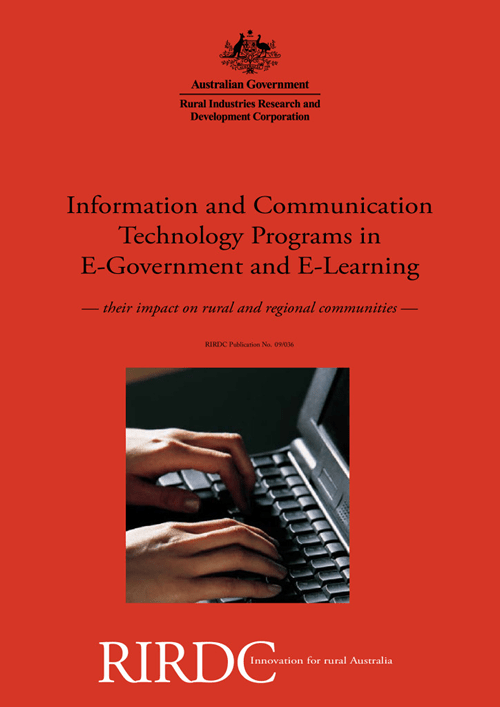The internet has diffused faster than almost any other technology in modern times. It has led to new ways of working, studying, doing business and accessing information. E-government and e-learning are applications of ICT that have offered tremendous benefits to people all over the world. However, it is also known that there exists a digital divide between those who have access to ICT, such as personal computers (PCs) and the Internet, and those who do not. International studies indicate that economic, demographic, environmental and technology sophistication are some of the factors that contribute to the digital divide. Australia, having a substantial rural and regional community, requires an understanding that the digital divide has both policy and managerial implications.
This RIRDC report examines the outcomes and impact of publicly-funded ICT-based initiatives on e-government and e-learning on rural and regional citizens. It includes case studies from Victoria and Queensland as examples of e-government and e-learning initiatives in these two states.
The report is for policy makers at the Federal and State level governments, education boards, TAFE institutes, rural community leaders, private organisations, local councils and rural citizens.




